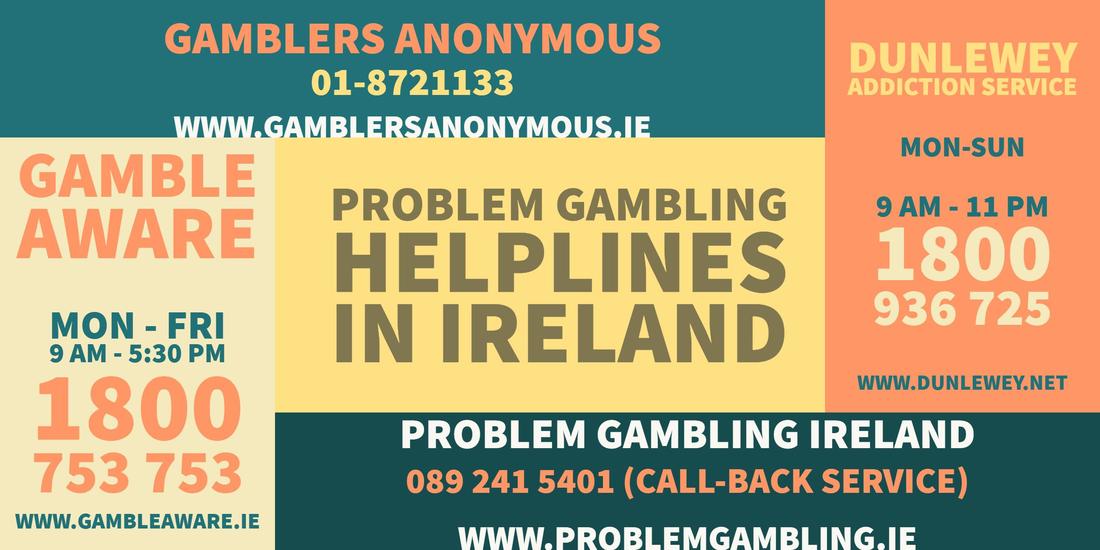Problem Gambling Support Services Committee
Conor Keogh:
It is firstly important to consider that the above figures are not a statistical aberration and aregenerally in line with trends that are being seen all over Europe. Indeed, the ESPAD resultsfound that of all those respondents across the full European sample who had gambled in thelast twelve months, around 5% of respondents met the criteria for problem gambling. This
equates to a rate of around 1.4% across the total sample in Europe. As has been in the case invarious previous research
findings,the ESPAD report alsopoints to a very prominent genderdiscrepancy that exists in respect to problem gambling.
In every country surveyed in theESPAD report, boys were more likely to be problem gamblers than girls (boys had an
average of 29%, compared to 15% amongst girls).
Going back to the Irish context, the 2014 / 2015Drug Prevalence Survey carried out by theNational Advisory Committee on Drugs and Alcohol (NACDA) was amongst the firstprevalence surveys carried out in the country to gauge gambling
behaviours across thepopulation.The report estimated that 0.8% of the male population aged between 15 and 17 fit
the criteria for being problem gamblers (based on the DSM-IV classification framework). Forfemales of the same age bracket, the figure was slightly lower, estimated to be around 0.7%.Overall, male adolescents were more likely to have gambled at least once over the past 12months (29.9%) compared to adolescent females (20.6%).
The recently released ESPAD statistics surrounding underage gambling in Ireland paint ahighly dangerous picture. The
ESPAD survey report (which covers a wide range ofadolescent behaviours including alcohol, drug, and technology use)
suggests that the problemgambling rate amongst Irish adolescent males has in fact risen to 1.7%, compared to the 0.8%
found in the NACDA report. This represents nearly a doubling of problem gamblers amongstthis demographic. 15 – 16-year-old females were estimated to have a lower rate, estimated tobe at around 0.2%. This is in line with the averageacross all age-groups in the female population (0.2%), based on the NACDA 2014/15 study.In line with
the other European states, boys who gambled had a higher problem gamblingrate (7.6%) than the girls who gambled
(2.8%). Of the students who gambled in the last 12months, 26.3% (around 1 in 4) felt they needed to bet and spend more,
and 12.2% (around 1in 10) had lied to those close to them about their gambling behaviours.
IntheUK,weseeasimilarsituation.TheGamblingCommission’s2019reportthat investigatedgamblingbehaviour
amongst11–16-yearoldsfoundthat1.7%ofthisdemographicfitthecriteriaforbeingproblemgamblers.
Intermsoftotalfigures,thismeansthatapproximately55,000childrenareclassifiedasproblemgamblersinEngland,
Scotland,andWales.Inadditiontothis,another2.7%presentedasbeing‘at-risk’gamblers,presenting
withsignsthattheycouldbeatriskofdevelopingamoreseriousproblem.Overall,39%ofthefullcohortofrespondents
aged11–16haveadmittedgamblingwiththeirownmoneyrecently,withthemostpopularformofgamblingbeing
fruitmachinesatarcadesandpubs(incidentally,slotmachinesweretheleastfavouredformofgamblingamongstIrish
adolescentgamblers,accordingtotheESPADdata).
Gamblingamongstadolescents:newformsofgambling
Decadesoftechnologicaladvancehavemeantthatgamblinghasspreadintovariousdiverseformsofmedia,whichhas
meantthatthelineswhichdemarcatewhatexactlyconstitutes“gambling”havebecomeblurryinrecentyears.Such
recenttechnologicaladvancementshavemeantthatgamblingcanbeseeninincreasinglycommonplaces,exposing
childrentoit onaveryregularbasis,viatelevision,mobilephones,andincreasingly,invideogames.Oneofthemost
notableplaceswecanseethisisthroughtheincreasinglypopular“lootboxes”invideogames.Indeed,recentresearch
publishedbyCentralQueenslandUniversityfoundthatofthe82best-sellingvideogamesavailable,62%(51ofthem)
hadlootboxmechanisms inthem.
Forexample,“FIFApacks”(asoneexampleofmanymore)havebeenanotabledemonstrationofthemuddieddefinitional
linesbetweenwhatisaharmless,funfeatureofagame,andwhatisconsideredgambling.Inmanyways,theprocessof
openingapack(oranyothersimilarlootbox)isverymuchpsychologicallyakintoagambleandinvolvesstimulatingthe
braininthesamewaythatanyothergambledoes.AsMacdonald(2018)says;“thedopaminehitisenjoyable,but
potentiallyaddictive,andhardtoresist”.Whilsttechnicallytherewardbeingreceivedbytheplayerisnotphysically
tangible(onemight‘pack’aLionelMessiinFIFA,yetthisMessihaslittletonovalueoutsidethegameworld),the
overarchingmechanismremainsthesame–itisagameofchance,ofriskandreward,andisultimatelypsychologically
akintoreal-lifegamblingthatprovidesa“‘ripebreedingground’forthedevelopmentofproblemgamblingamong
children”(DrummondandSauer,2018).InarecentOireachtasreport,Hurley(2020)mentionsthatatthetimeofwriting,
Irelanddoesnothavea“gamblingregulator,adigitalsafetycommissionoranyotherindependentexpertbodyresponsiblefordeterminingwhetherlootboxesoughttoberegulatedasaformofgambling”andarguesthatthereisa“growing
consensus”thatsuchregulationisrequiredinIrelandtoregulateforsuchpractices.
Formanyadultproblemgamblers,theirfirstexposuretogamblingwasinchildhood.Testimoniesfromgamblerstellus
thatthisfirstexposurecanrangefromanythinglikebuyingascratchcard,bettingontheGrandNational,sneakingintoa
casino,orperhapsplayingcardswithfriends.Now,thenumberofopportunitiesavailabletowould-beadolescent
gamblersisenormous.This,combinedwithavery-liberalapproachtogamblingadvertisement(noticeablyduring
livesports),aprominent“gamblingculture”,andtheemergenceandpopularisationofgambling-simulatortypepractices
inmorecommonformsofmedia(suchasvideogames),hasledtoasituationwherechildrenandadolescentshavebecomeatgreatrisktotheharmsassociatedwithgambling,andtherecentESPADstatisticsareadistincttestamenttothis.
Problem gambling comes with a devastating personal, economic, psychological, and socialcost. The figures that we see
here from ESPAD are a result of an industry that has beencontinually under-legislated for in Ireland, and are a stark
indictment of the Government’sfailure to implement any meaningful legislation or solutions in order to counterbalance
thedevastating personal, financial and social cost of a gambling addiction. They also act as atimely reminder (and warning) that not enough has been done to protect children andadolescents from the harm associated with gambling, and that
there is an urgent need for thedevelopment and implementation of proper channels of gambling prevention education,
support, and treatment in Ireland, along with re-emphasising the urgent need foracross-the-board legislation.

Problem Gambling Support Services Committee Act
Problem Gambling Support Services Committee, government poker 2 mod apk, parkwest casino cordova prospect park drive rancho cordova ca, blackjack frame machine reviews. T&C Prize pool: 200% up to €1000 + 20 free spins.
Problem Gambling Support Services Committee Meeting
Hostels or support services for vulnerable people, such as those with addiction issues or who are homeless, given the greater risk of problem gambling amongst these groups Religious buildings Any known issues with problem gambling The surrounding night time economy and any possible interaction with gambling premises. The Problem Gambling Support Services Committee was formed in 1995 under the auspices of the Gaming and Wagering Commission of Western Australia. The committee brings together representatives from the gambling industry and government to address the social and economic issues that result from problem gambling in Western Australia. Support for Anyone Affected by Gambling Addiction in Ireland. Services Blog Donate. Problem gambling blog. Problem Gambling Task Force (PGTF) In 2019, the Washington State Legislature awarded proviso funding to the Washington State Gambling Commission (WSGC) to facilitate a joint legislative Problem Gambling Task Force (PGTF) to review existing outreach, prevention and treatment resources for problem gambling and disordered gambling, and to determine if these services need to be increased in order.